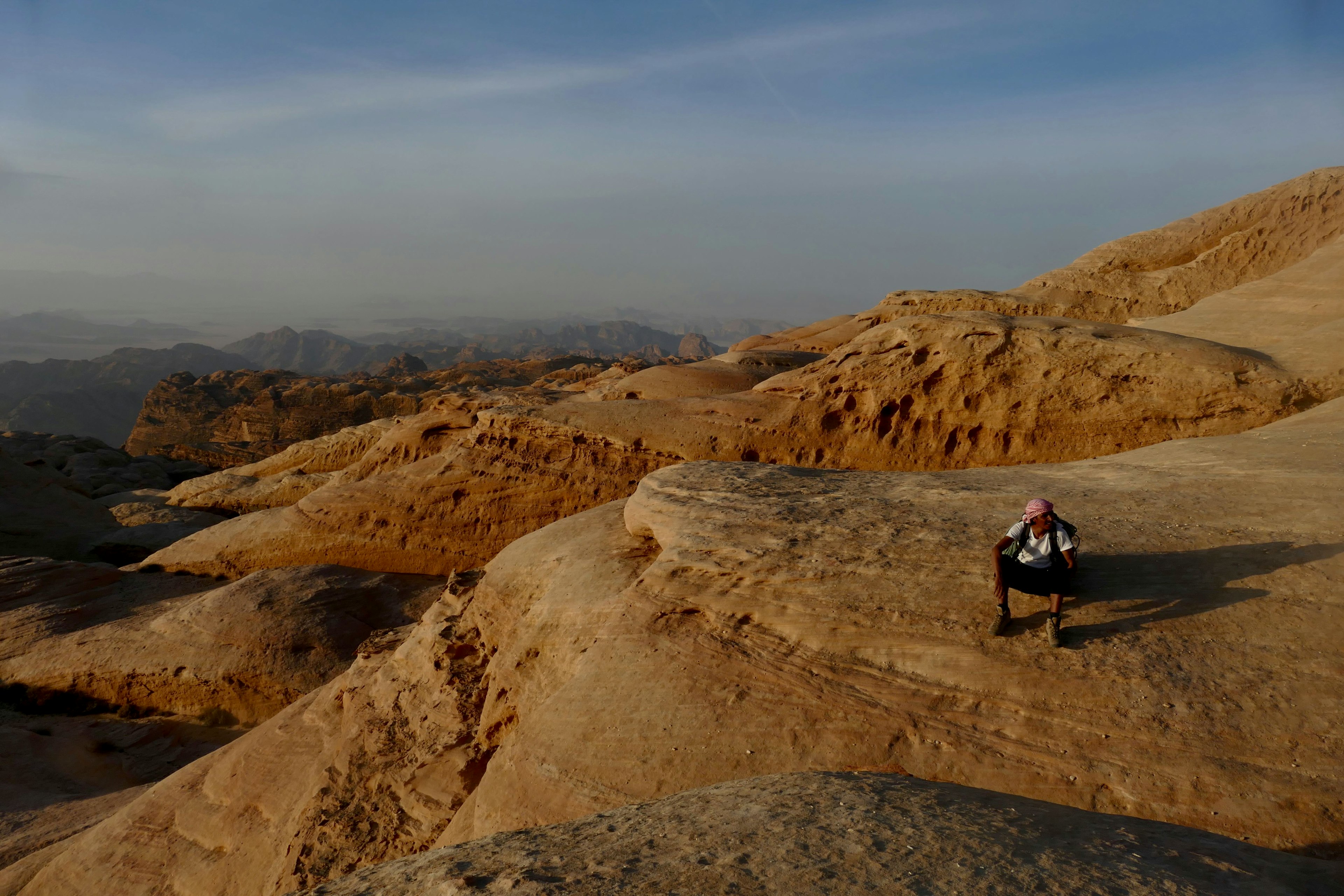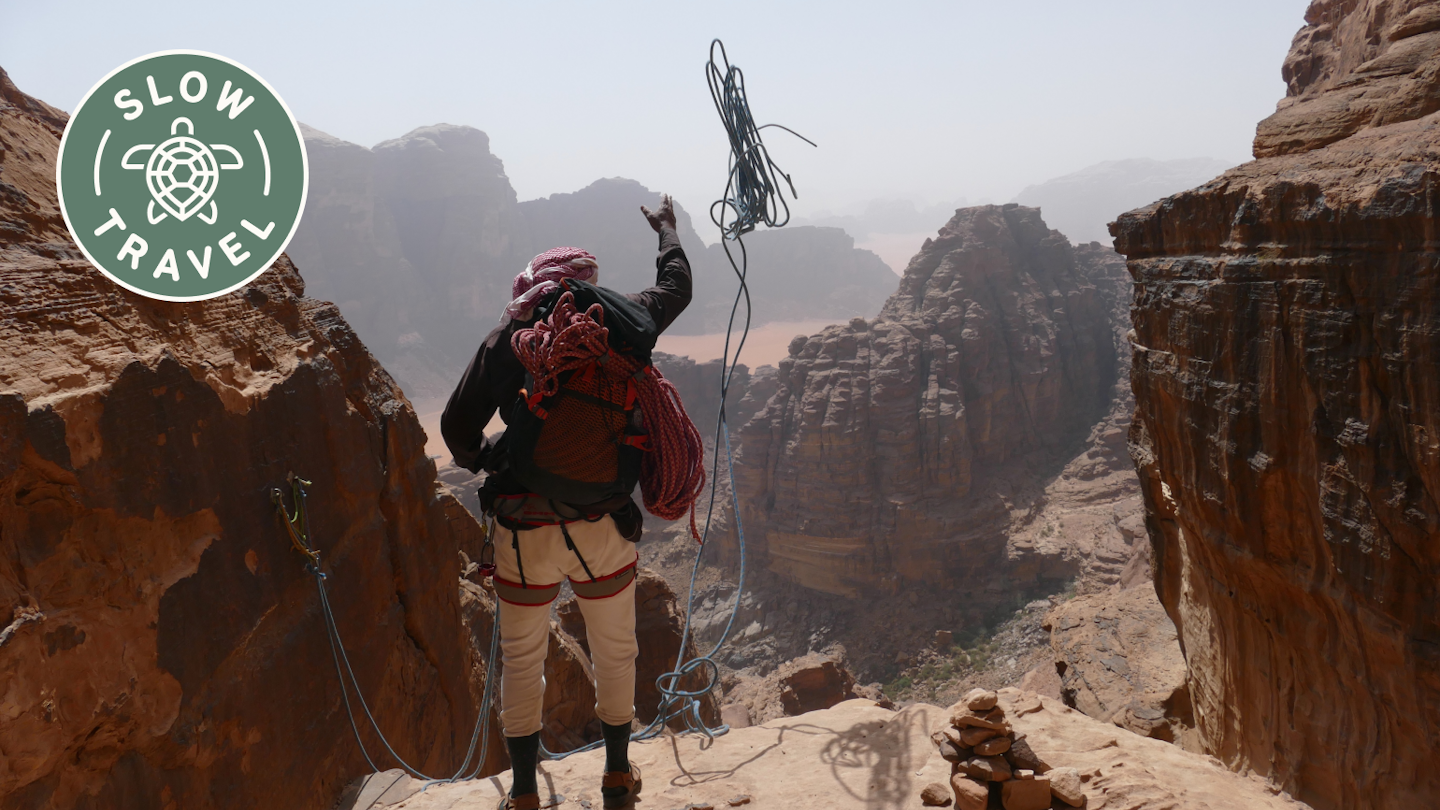Discover the Wadi Rum Trail in Jordan
Travelers to Jordan now have a remarkable way to experience the iconic desert of Wadi Rum: on the 75-mile Wadi Rum Trail.
This new route has been developed in collaboration with local Bedouin tribes who call this protected area home. Known for its stunning desert landscapes, rust-red sands, and enigmatic canyons adorned with petroglyphs, Wadi Rum stands out as one of the most attractive destinations in Jordan — further heightened by its portrayal in films like Dune, Star Wars, and The Martian.
Paths through Wadi Rum
Hiking is a traditional way to explore Wadi Rum. Generations of travelers, traders, hunters, shepherds, and pilgrims have traversed these sands, including the pre-Islamic Nabataeans who built the impressive sandstone cities in Petra and Hegra. The Wadi Rum Trail invites visitors to experience a different dimension of the desert, promoting a slower and more intentional visit.
“Wadi Rum is one of the most beautiful deserts on Earth, yet most visitors only see a small fraction of it,” said Ben Hoffler, co-founder and developer of the trail. “Four-by-four tourism heavily dominates the region, typically offering accelerated tours around established tourist spots.”

Walking and Climbing with the Bedouin
The Wadi Rum Trail has been three years in the making with about 10 tribesmen scouting its route, including Bedouin who once moved freely around this region, now separated by modern borders.
In addition to hiking, the new trail also features scrambling and rock-climbing routes that have been traditionally used for millennia — a unique characteristic.
“Wadi Rum’s mountains harbor some of the oldest known rock climbs in the Middle East,” Hoffler shared. “The early inhabitants climbed to reach the quiet high parts of the mountains where ibex could be best stalked. Bedouin tribes continued this climbing tradition, often going barefoot and unroped, scaling the highest, most formidable mountains of the region.”
How to Hike the Wadi Rum Trail
The Wadi Rum Trail is designed to be walked with a Bedouin guide from the local community, enriching the experience by sharing their traditional knowledge and heritage.
“The Wadi Rum Trail is a natural route that serves visitors away from typical tourist paths,” stated Sabbah Eid of the Anaza tribe, who supervised the scouting work on the trail. “It connects the past with the present while supporting local communities, promoting heritage and ecotourism.”
While the complete trail takes 10 days to hike, travelers short on time can opt to complete shorter sections. It’s also feasible to skip the climbing segments, as the current trails rank as the easiest grade. Hikers can choose what they feel comfortable tackling each day.
The Wadi Rum Trail’s management does not organize hikes. Instead, it acts as a clearinghouse, linking travelers to local Bedouin tour operators.
“Walking through the remote, waterless deserts along these trails would be challenging without Bedouin support,” Hoffler remarked. “It is the Bedouin who have opened up some of the most beautiful, lesser-known sections of the region for long-distance hiking over the last decade.”
The Wadi Rum Trail is akin to Egypt’s Sinai Trail and Red Sea Mountain Trail, offering opportunities for travelers to connect more deeply with Bedouin cultures and experiences.
“We hope to provide Wadi Rum with the long-distance hiking trail it has longed for, showcasing not only its popular tourist areas but also the quieter, remote wilderness,” Hoffler concluded.




